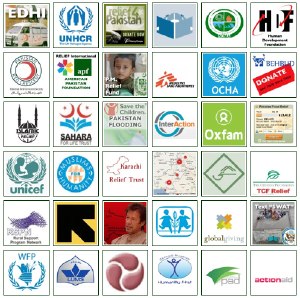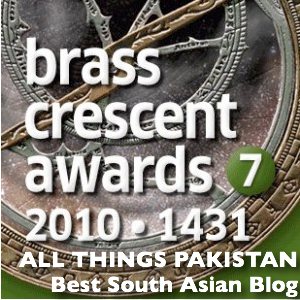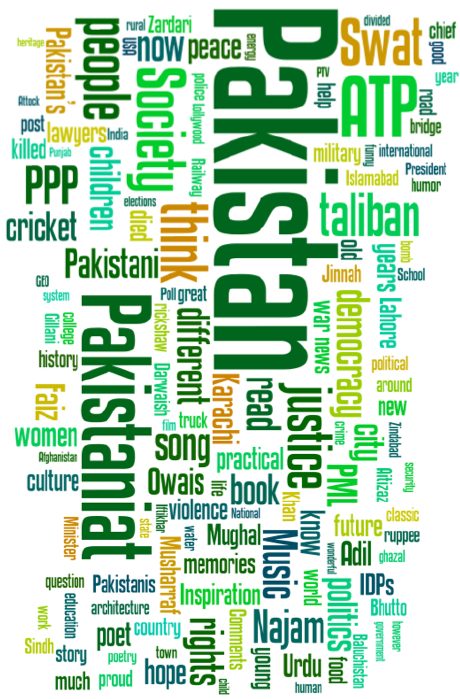Yemeen Ur Rahman
 (Editor’s Note: There is now a very welcome mushrooming of efforts and avenues through which we can give cash or kind assistance to the victims of the Pakistan floods. A lot of people, in Pakistan and abroad, have risen to organizes collection drives and also are choosing to provide relief goods directly by making ‘Survival Boxes’ with essential items needed by those in immediate relief goods. In this post, one reader has outlined some useful steps in going about organizing for relief collection and providing such relief boxes, especially for those outside Pakistan who wish to do so. We are also including a useful video made by Fakhr Alam for PIA on this subject. We hope this information will be useful to our readers. While both these are especially targeted at Pakistanis abroad, we would love to hear from those in Pakistan about what is working best there. We also request readers to please share with us their own experience and ideas about what are the things to do, or not do).
(Editor’s Note: There is now a very welcome mushrooming of efforts and avenues through which we can give cash or kind assistance to the victims of the Pakistan floods. A lot of people, in Pakistan and abroad, have risen to organizes collection drives and also are choosing to provide relief goods directly by making ‘Survival Boxes’ with essential items needed by those in immediate relief goods. In this post, one reader has outlined some useful steps in going about organizing for relief collection and providing such relief boxes, especially for those outside Pakistan who wish to do so. We are also including a useful video made by Fakhr Alam for PIA on this subject. We hope this information will be useful to our readers. While both these are especially targeted at Pakistanis abroad, we would love to hear from those in Pakistan about what is working best there. We also request readers to please share with us their own experience and ideas about what are the things to do, or not do).
Based on our experience of trying to collect and prepare ‘Survival Boxes’ for flood victims in Pakistan, here are some practical lessons that may also be useful for others.
1. Planning
It is critical to plan ahead of time what type of donation drive the local community will engage in. There are many options and the local community have to be in-sync with what is to be done. Do not leave it open ended with a “bring anything you can message.” Clearly specify the following,
- Who is the project lead.
- Who are designated people to collect funding.
- What is the project name.
- What donation is needed and will be accepted.
- How will the donation be collected.
- When will it be collected and made ready for shipment.
- When will the community receive an update.
2. Funding
- You can choose to “sell” the donation boxes and collect funds.
- You can utilize the funds and box and ship them later.
- You can partner with another organization or community center.
- Average cost in the US is around US$25.00 for a 16in x 12in x 12in box of supplies.
3. Procurement
Items in the box can vary, but in general the following are considered to be a useful mix of items:
- 1. Water bottle (4 large bottles)
- 2. Milk carton (2 with long expiry)
- 3. Gatorade (2 large bottles)
- 4. Juice pack (6 packs)
- 5. Fruit bars (Pack of 16)
- 6. Chips (1 can; use can rather than bag)
- 7. Salty biscuits (3 packs)
- 8. Sweet biscuits (3 packs)
- 9. Soap bars (3 bars)
- 10. Insect repellent (1 bottle)
- 11. Dates pack (1 large pack)
- 12. Tooth brush (4 brushes)
- 13. Tooth paste (1 large tube)
- 14. Paper cups (at least 5)
- 15. Sanitary pads (1 pack)
- 16. Box (16in x 12in x 12in)
- It is best to identify specific suppliers to fulfill the above orders in bulk with negotiated discounts upfront. If there are wholesale suppliers of desi and conventional groceries in your area, it is best to approach them to establish a supply chain. Here in Houston, we have identified a local desi groceries wholesale vendor and another who supplies convenience stores and gas station owners. Always push for donated supplies and services; politely of course, you’ll be pleasantly surprised with the results.
- The supplies list is only a suggestion at best. Based on feedback from several NGOs and people on the ground, these items are in high demand and are most useful. It is based on the larger supply list published by various relief organizations, these can of course be tweaked slightly and with experience organizations are updating the lists, so keep an eye on new information about pressing needs.
- The boxes are meant to contain bare necessities around food and survival with emphasis on quick shipping as air cargo. They are not meant for clothes, blankets, tents etc. these should be considered as container cargo.
- Other possible things that could be added, include: Talcum Powder, candles and matches, flashlight and batteries, bed sheets, and a first aid kit.
4. Resourcing
Three types of resource teams are needed,
- Strategy and communication: Two people, who interface with the administration and communicate the goals and general direction to all parties involved.
- Planning and Management: Three people, with Project Manager as the lead and two project coordinators to layout the plan, schedule, resource needs etc.
- Execution: Ten and more people with assigned team leaders to execute the plan and directions of the Project Manager
5. Packing
- The Assembly Line model works well with three tables setup in a line. The box is built and slid down the table and items are added at each station. At the end of the line, the box is moved to the taping, labeling and stacking station.
- On either side of the assembly line, tables are stacked with supplies.
- One team is dedicated to the assembly line, one to the supply line, one to taping/labeling, one to stacking and one to trash cleanup as boxes of supplies empty out.
6. Shipping
- These types of supplies are best delivered as air cargo. PIA has arranged to take shipments to Pakistan and to those in need. It is absolutely imperative that the shipping arrangements to PIA cargo locations are worked out before boxes are packed and stacked, awaiting delivery, especially if there is no PIA cargo office in your location.
- Pakistan International Airline (PIA) has created a special webpage with details of what is needed and how to get it to PIA and important contact information (here).
- There are also efforts underway to ship containers of longer lasting items such as clothing, tents, blankets etc. by a number of larger relief agencies. Please contact the ones you are most comfortable with to get details.
7. Handoff on the Ground
- Coordinate with local NGOs for pickup and delivery to affected areas.
- Hand off to Pakistan Army for delivery.
- If sent through PIA, they will do this for you.
8. Report Back to Community
- In order to close the loop and keep the community informed, it is important that the donation drive administrators track the donations and update the community on their delivery. This will maintain the interest and demonstrate that their efforts are bearing fruit.
9. Some Process Improvements
- Set up a Task Assignment Station at the head of the operations. This will allow for quick task assignments as volunteers stream in.
- Have a Kids Station where kids 5-14 can pick up juices etc. and maybe get a toy at the end of their shift for a “job well done.” It was amazing to see how engaged and involved the kids were in our local drive and it’ll be a nice gesture to acknowledge and nurture their efforts.
Yemeen ur Rahman is an IT management professional in Houston and active in Pakistani community activities there.



















































you can simply go to sleep and wake up a few hours later right? Of course that’s cheating the question. We want to be able to go back and redo those silly mistakes we made many years ago. who doesn’t wish they could go back and talk to their 15-year-old self? Tell them not to make the mistakes you did (or they will). Or perhaps you’d rather travel 500 years into the future and see those flying cars we were promised by the year 2000. Fortunately, time travel is theoretically possible.
http://www.travelco.pk/
They Still Need Help!
I have to agree with Haroon’s comment that buying supplies in Pakistan would be much cheaper than in US (or any other western country). The transportation costs of sending all this, esp. water, are going to be huge both for PIA and anyone domestically within Pakistan. Besides the economy of buying supplies locally, I wonder if the author has considered the flood-stricken demographic: these supplies would be given to some of the poorest and most illiterate Pakistan, How many of them do you think would be able to understand what Gatorade is? or determine if the food stuff is halal or not? Dont just assume that they will be able to read the food labels.
I suggest donating to trusted international charities instead, they have resources, existing supply chains, and more importantly, disaster management experience.